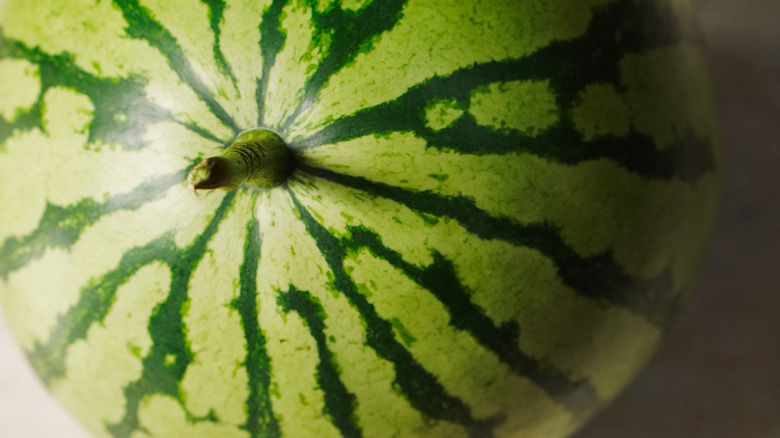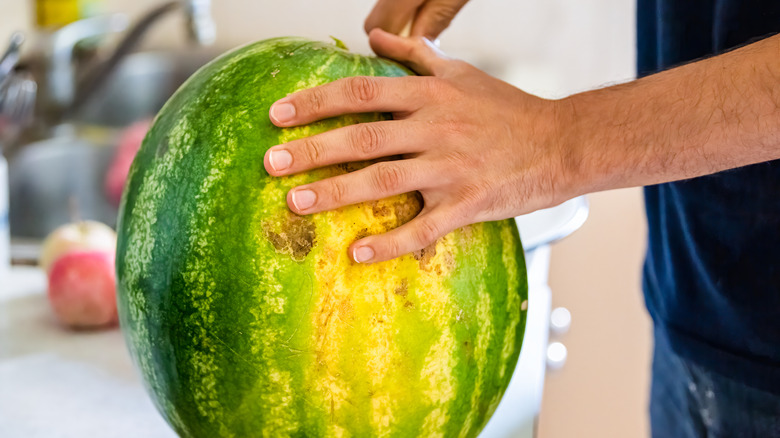Why You Should Avoid Buying Shiny Watermelon At The Store
With summer comes a bountiful harvest of delicious fruits, and watermelon is a go-to favorite for many. Of course, that means there's nothing more disappointing than finally heading to the store to buy a summery, sweet watermelon, only to cut a slice, bite into the flesh, and find that it tastes like water. There's only one way to avoid that roulette and the potential crushing disappointment that comes along with the moment — you need to know how to pick out the best watermelon at the store every time. There are plenty of tips and tricks out there, but some of the most surefire ones involve using only your eyes: If you see a shiny watermelon, avoid it.
Why? Simply put, shiny watermelons indicate that they were harvested before they could reach peak ripeness. The more mature a watermelon gets, the bigger and heavier it becomes, and the duller the outside will look. This runs a bit counterintuitive to the way some of us buy our produce, looking for the stand-out veggies and fruits to fill our baskets with. If you ever picked out the shiniest watermelon in the bunch, only to be supremely disappointed by the flavor profile, next time pick out the dullest one instead. Chances are, you'll be rewarded for your efforts with a nice, juicy watermelon.
Other dos and don'ts for picking out the best possible watermelon
There are other ways to pick a sweet watermelon using just your eyes, too. First, keep an eye out for the watermelon spot. Basically, as a watermelon hangs out in the fields ripening, the spot in contact with the ground will become more tinted and larger. A big, yellow or cream spot usually points to a watermelon that's nice and ripe, while a white spot indicates a melon that hasn't had enough of a chance to mature.
You can also pick the sweetest watermelon at the store with a simple 2-finger trick, which is to measure the distance between the green lines. If they are two finger widths apart, chances are high you're looking at a nice, ripe melon. But you can and should run some other checks, too. Lift the melon to gauge the weight, since a ripe watermelon should be heavy for its size. You can even do a little acoustic test by giving the melon a gentle knock with your hand (a ripe melon will sound deep and hollow, more like a thud or a thump than a knock). With these tips in mind, you'll rarely have to worry about running into a tragic, watery, tasteless melon again.

